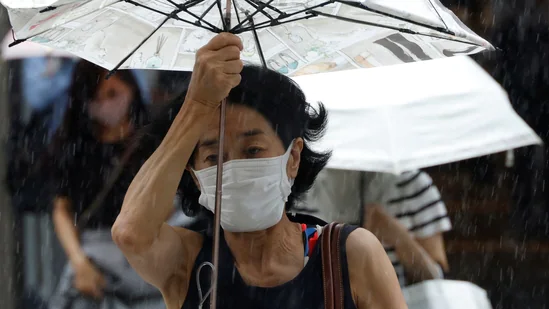
TOKYO, Sept 25, 2022 (BSS/AFP) - Thousands were without running water and
power in central Japan on Sunday after Typhoon Talas dumped record rains on
the region, triggering floods and landslides, and leaving at least two dead.
The body of a man in Kakegawa city, Shizuoka region, was pulled from what
remained of his house on Saturday after a landslide destroyed it, a regional
disaster management official told AFP.
"Another male (in neighbouring Fukuroi city) was driving to his home
(Saturday) when the water level rose and his vehicle apparently stopped.
While the individual tried to walk home, he was believed to have died," the
official said.
Another man was still missing in Kawanehoncho town in Shizuoka after his
vehicle fell into a hole that opened up in the roadway, he said, adding that
three others suffered minor injuries.
Typhoon Talas battered central Japan on Friday and Saturday as it swept by
just off the Pacific coast, dumping more than 40 centimetres (16 inches) of
rain in a 24-hour period in communities in Shizuoka, according to Japan
Meteorological Agency.
It was downgraded to a depression Saturday morning before moving back out to
the Pacific.
Heavy rain from the storm sparked landslides, including in remote mountains
in Shizuoka, causing several electricity pylons to fall and snap, resulting
in as many as 120,000 households losing power Saturday.
As of Sunday afternoon, 2,910 households in Shizuoka and the neighbouring
Gifu region were still without power, according to regional utility Chubu
Electric Power.
"As for those areas where restoration crews are not able to reach due to
blocked roads after landslides, we will make progress while analysing the
conditions of the landslides," the utility said.
Around 55,000 households in Shizuoka were without running water after debris
clogged a water inlet.
Municipal officials were working with the coastguard to provide clean water
to residents.
"Currently, we are working to remove debris from a water inlet. But for now
we are unable to give any estimate as to when it can be restored," the
regional government said in a statement Sunday morning.
Japan routinely experiences severe damage from typhoons in summer and autumn.
Last weekend, Typhoon Nanmadol slammed into southwestern Japan, killing four
people and injuring 147 others.